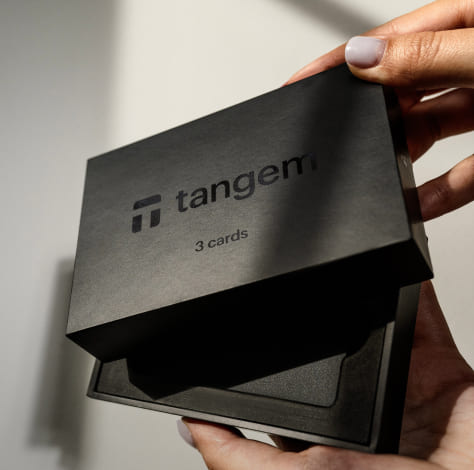
Cold storage solutions offer the highest level of security for cryptocurrency by keeping assets completely offline. Utilizing air-gap technology, these methods ensure that your private keys are isolated from internet threats and hacking attempts. By implementing robust offline protection measures, users can safeguard their assets from malware and unauthorized access, providing peace of mind. This post explores various strategies and tools for enhancing your cold wallet’s security, ensuring your cryptocurrencies remain out of reach of cybercriminals.
Key Takeaways:
- Cold wallets provide maximum security by storing private keys offline, reducing exposure to online threats.
- Air-gap security methods ensure no physical or network connection exists between the cold wallet and the internet, enhancing protection against remote attacks.
- Regularly auditing and securely managing access to cold wallets helps maintain the integrity and security of stored assets.
Understanding Cold Wallets
Definition and Purpose
For those seeking robust cryptocurrency security, cold wallets serve as a formidable solution. These wallets are designed to store private keys offline, minimizing exposure to online threats or hacking attempts.
By ensuring that the wallet is not connected to the internet, users can protect their assets from unauthorized access while maintaining complete control over their cryptocurrency holdings. The main purpose of cold wallets is to provide a secure storage environment that allows users to safely keep their digital currencies for extended periods.
Types of Cold Wallets
By categorizing cold wallets, users can better understand their options and select the best fit for their needs. The main cold wallet types include:
- Hardware Wallets
- Paper Wallets
- USB Drives
- Embedded Devices
- Multi-signature Wallets
After considering these options, individuals can choose a method that aligns with their security requirements and personal preferences. Along with the basic types listed above, it’s vital to know about specific features offered by these wallets. Each cold wallet type has its advantages and disadvantages.
| Type | Details |
|---|---|
| Hardware Wallet | Secure devices specifically designed for storing cryptocurrencies. |
| Paper Wallet | Printed information containing public and private keys for offline storage. |
| USB Drive | A portable device storing wallets securely, used offline. |
| Embedded Devices | Specialized devices that integrate wallet functionality. |
| Multi-signature Wallet | Requires multiple signatures for transactions, enhancing security. |
Due to the importance of security features in cold wallets, users should assess these options based on their individual needs and circumstances. The selection might depend on factors like portability, ease of use, and security level.
| Type | Key Feature |
|---|---|
| Hardware | Physical device with a protected chip to prevent malware. |
| Paper | Offline method, susceptible to physical damage or loss. |
| USB | Convenient but may be vulnerable to malware attacks if not handled carefully. |
| Embedded | Higher security but can be complex to set up and use. |
| Multi-signature | Reduces risk by requiring multiple approvals for access. |
Air-Gap Security Explained
Assuming the goal is to protect sensitive information from potential cyber threats, air-gap security offers a robust solution by completely isolating data storage devices from any network connectivity. This practice ensures that no external entities can access the data, as the systems are physically separated from the internet and any other networks. The strategy is typically employed for storing highly sensitive data, such as financial information, critical infrastructure controls, and governmental communications.
What is Air-Gap Security?
At its core, air-gap security refers to a physical and logical isolation approach where a computer or a network is completely disconnected from external networks, including the internet. This method involves implementing a system where sensitive devices do not have hardware connections, such as Wi-Fi or Ethernet, ensuring that they cannot communicate with the outside world. Often, data is transferred via secure methods like USB drives, which are scanned for threats before use.
Benefits of Air-Gap Security
AirGap solutions provide elevated security for users concerned about unauthorized access to their data. By employing air-gap methods, individuals and organizations can effectively eliminate the risk of remote attacks, malware infections, and data breaches. Systems that are air-gapped are inherently more secure as they do not rely on potentially vulnerable connections that could serve as entry points for malicious actors.
Further emphasizing the effectiveness, air-gap security significantly reduces the surface area for cyberattacks. Since the systems are not part of the digital landscape, it becomes exceedingly difficult for hackers to infiltrate them. This approach also enables the use of enhanced backup and recovery systems without fears of external threats affecting those processes, ensuring data integrity and availability remain fully intact.
Methods for Achieving Air-Gap Security
Despite the increasing threat of online attacks, achieving air-gap security for digital assets is possible through several methods. One effective strategy involves utilizing hardware wallets, which are specifically designed to keep private keys isolated from internet-connected devices. This isolation prevents unauthorized access and helps mitigate the risk of malware or hacking attempts, ensuring that your cryptocurrencies remain secure.
Hardware Wallets
Against the backdrop of constantly evolving cyber threats, hardware wallets offer a tangible solution for secure cryptocurrency storage. These devices store your private keys offline and only connect to a computer or smartphone when necessary for transactions. With encrypted private key storage and multi-factor authentication, they provide a robust defense against both remote and physical theft.
Paper Wallets
Hardware wallets have their advantages, but securing your assets with paper wallets remains a popular method for achieving air-gap security. These wallets involve printing your private keys and public addresses on physical paper, completely detaching them from any digital platform. By generating a paper wallet in a secure environment and ensuring its safe storage, users can protect their holdings from cyber threats and hackers.
Wallets can also be precisely generated through offline software, providing an additional layer of security. It is important to keep the generated keys safe from wear and damage, as losing access to the paper wallet results in complete loss of funds. When properly executed, paper wallets serve as a highly secure method to store digital assets offline, free from hacking risks and unwanted access.
Setting Up a Cold Wallet
Now, ensuring that your cold wallet is properly set up involves several key steps to maximize your offline security. The first step is to select an appropriate cold wallet that suits your specific needs. You can choose from hardware wallets, which are devices designed for offline storage, or paper wallets, which involve printing your keys. Assess factors like ease of use, compatibility with various cryptocurrencies, and the level of security each option provides.
Choosing the Right Wallet
Wallet selection is pivotal to achieving optimal security for your assets. Hardware wallets, for instance, offer superior protection against malware and hacking attempts since they are not connected to the internet. On the other hand, paper wallets are less vulnerable to online threats but require careful handling and storage to avoid physical damage or loss.
Best Practices for Security
At every stage of using a cold wallet, implementing best practices can significantly enhance your security posture. Always generate your wallet’s keys in a secure environment, ideally on an offline device. Avoid sharing your private keys, and never store them online or in cloud services. Regularly back up your wallet in multiple secure locations to protect against loss or damage.
Due to the potential risks associated with cold wallets, it’s vital to keep the principles of security at the forefront. Use strong, unique passwords, enable two-factor authentication if available, and store your recovery phrases securely. Additionally, consider physically securing the wallet itself in a safe or other secure location to prevent theft or unauthorized access. Always be vigilant against phishing attacks, as attackers may attempt to trick you into revealing sensitive information. Taking these precautions can greatly reduce your risk and enhance the integrity of your cold wallet security.
Maintaining Cold Wallet Security
Your cold wallet’s security hinges on effective maintenance practices. Regular updates to your security protocols can significantly reduce vulnerabilities. Ensure that your cold wallet software is kept up to date according to the guidelines of the wallet provider, but do this with caution, as updates should be applied within a secure environment. Assess the need for changes in your wallet management strategies periodically, adapting as necessary to current security threats.
Updates and Management
To safeguard your digital assets, establish a standardized process for managing updates and software management. Use only official channels for any updates and keep a documented history of all changes made to your wallet’s software. This creates a reliable method for restoring your setup in case of any issues that arise from updates.
Regular Checks and Audit
Audit your cold wallet’s environment regularly to catch potential security flaws. Conduct thorough checks of the physical security measures surrounding your cold wallet and verify that access is limited to trusted personnel only. Keep records of any access attempts to document any suspicious behaviors.
Understanding the importance of regular checks involves more than just assessing digital platforms; it extends to evaluating the physical security measures in place. Regularly inspect your storage devices for any signs of tampering. Ensure that your backup devices are intact and safely secured, as losing control over backup methods can lead to catastrophic losses. Utilize a checklist to monitor various elements of your cold wallet’s security, reinforcing an organized approach to maintenance.
Common Myths and Misconceptions
Unlike popular belief, cold wallets do not guarantee total invulnerability against hacking and theft. Many individuals assume that merely being offline offers full protection, overlooking the potential risks that arise from user errors, physical theft, or software vulnerabilities. Proper practices in managing and securing cold wallets are necessary for achieving the desired level of security.
Additionally, there is a misconception that cold storage is only for tech-savvy users or large investors. In reality, cold wallets can benefit anyone holding cryptocurrency. Simplified versions like hardware wallets are user-friendly and accessible, making them suitable for a broad audience, and they can significantly enhance the security of digital assets.
Misunderstandings About Cold Storage
After considering the basic principles of cold storage, it’s clear that many misunderstandings stem from a lack of knowledge about how these systems operate. Users often think that if they store their assets offline, they are automatically safe from all cyber threats. However, the safety of cold storage relies on the user’s understanding of best practices, such as generating wallets in secure environments and maintaining physical security.
Moreover, some users mistakenly believe that cold wallets can fully replace the role of proper backup systems. While cold storage keeps assets secure, losing access keys or falling victim to physical theft can result in permanent loss of funds. Thus, keeping well-managed backups alongside cold storage is equally necessary to ensure continued access.
Debunking Air-Gap Security Myths
An important myth surrounding air-gap security is the notion that any device disconnected from the internet is completely safe from any form of attack. This is misleading since physical access, malware on removable media, and other indirect attack vectors can compromise even the most secure systems. It’s necessary for users to understand that even air-gapped systems need vigilance and proper security protocols.
Common misconceptions can lead to dangerous oversights, including the belief that physical security is unimportant for cold wallets. In reality, securing the physical device is just as vital as keeping it offline. Ensuring that no unauthorized individuals can access the device, along with regular updates and maintaining a low profile, will help protect assets effectively. Users must remain aware of all potential threats to reinforce their air-gap strategy properly.
Final Words
Ultimately, cold wallet air-gap security offers unparalleled protection for digital assets by ensuring complete isolation from online threats. By keeping private keys offline, users can safeguard their cryptocurrencies against hacking attempts and malware attacks. This method reinforces the importance of thorough security practices in an increasingly digital world where cyber threats are ever-evolving.
As the landscape of digital asset management progresses, relying on cold wallets remains a solid strategy for those seeking maximum protection. Implementing these offline protection methods not only enhances security but also instills confidence in the safekeeping of valuable assets in the blockchain ecosystem.
FAQ
Q: What is a cold wallet and how does it provide air-gap security?
A: A cold wallet is a type of cryptocurrency wallet that is not connected to the internet. This air-gap security method protects digital assets by storing them offline, reducing the risk of hacking and online theft.
Q: What are the most common methods for securing a cold wallet?
A: Common methods for securing a cold wallet include using hardware wallets, paper wallets, and secure USB drives. These devices ensure that private keys remain offline, minimizing exposure to potential online threats.
Q: How can I safely create and store a cold wallet?
A: To safely create a cold wallet, generate your wallet using a secure, offline device. Store the recovery phrases and private keys in a safe location, such as a safety deposit box or a secure home safe, away from potential physical theft.






